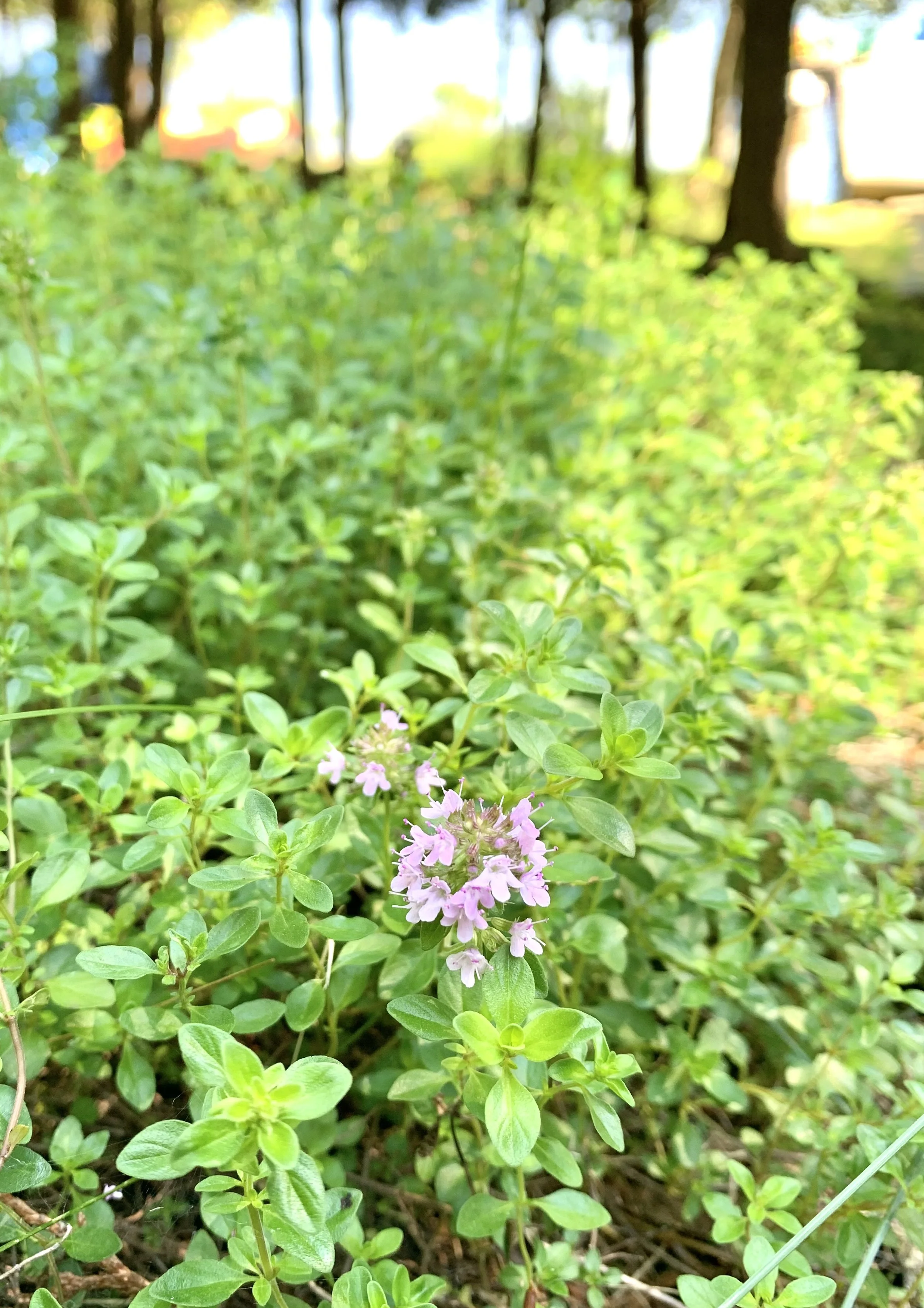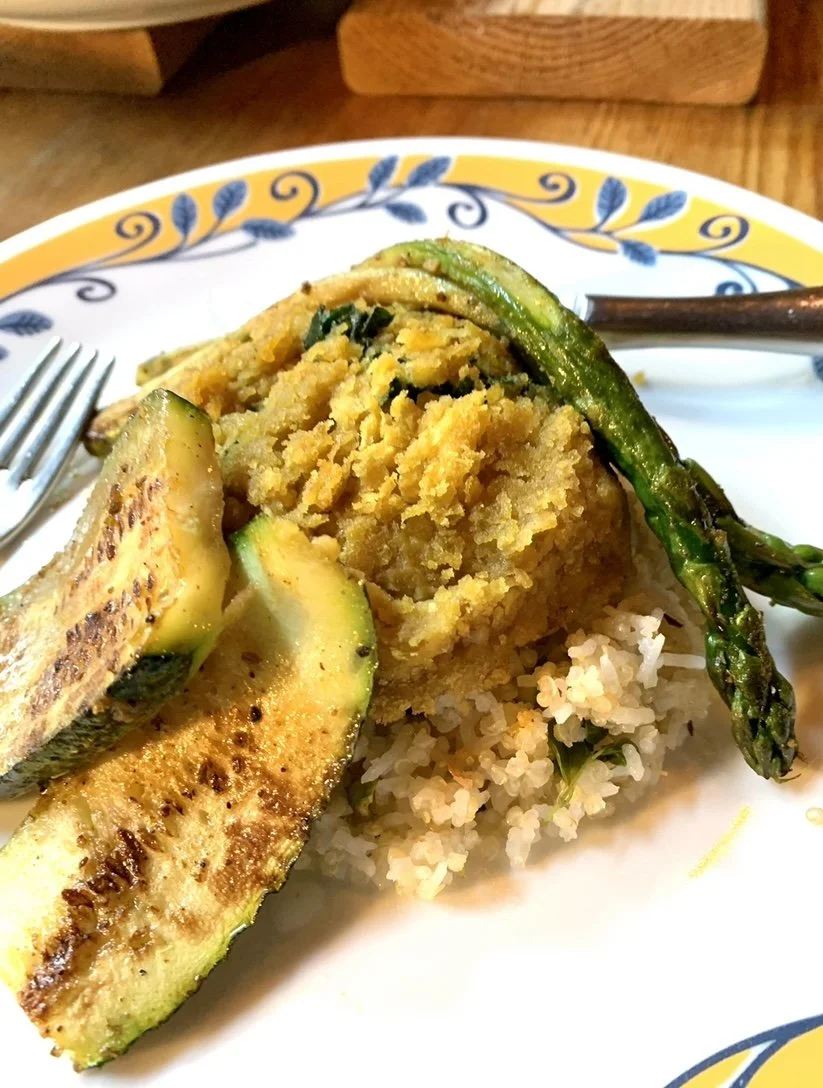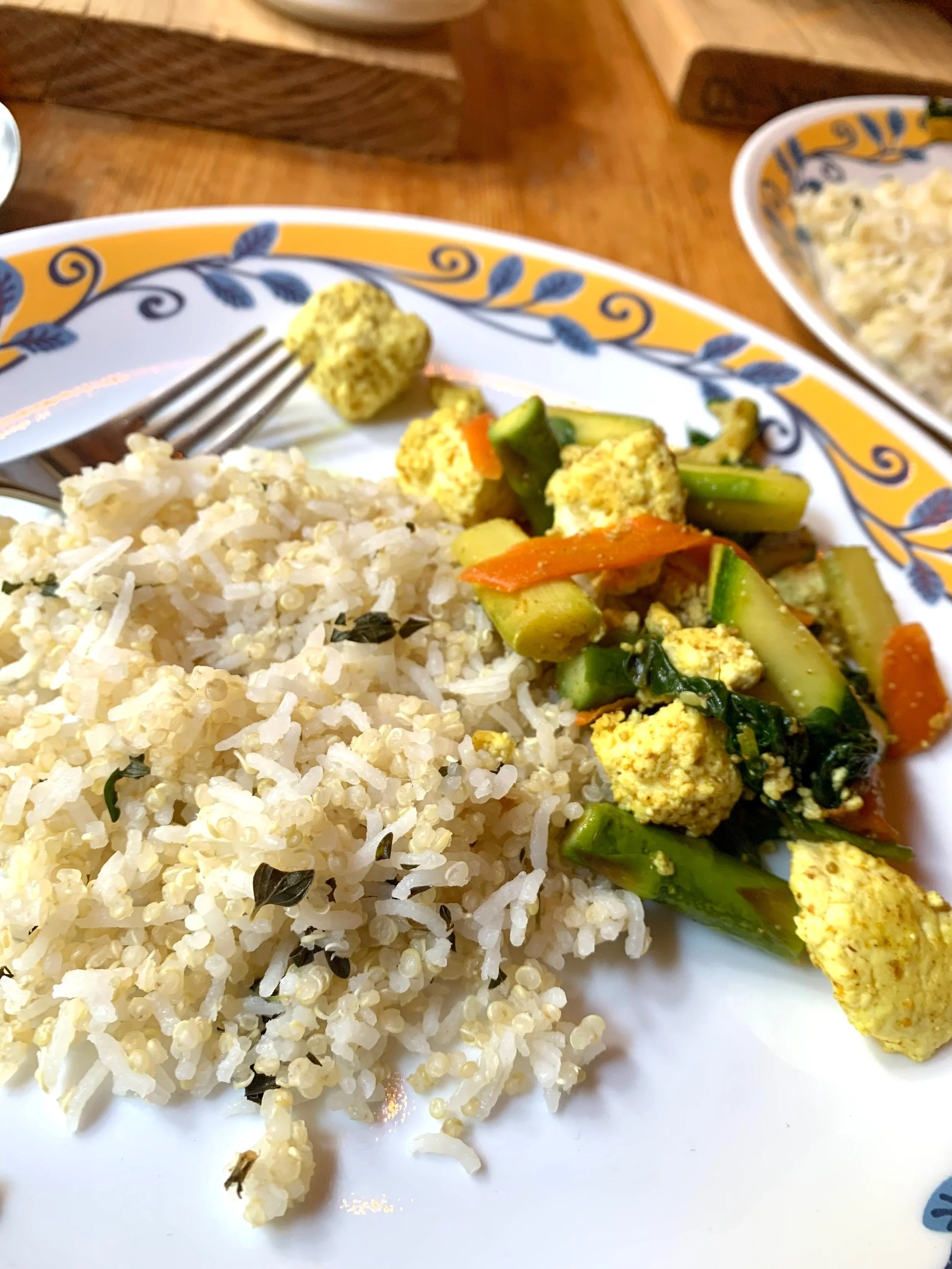Thyme Lime Rice
Hi and welcome! I’m Evangeline—mom, Registered Massage Therapist, Yoga teacher, and lover of all things health and wellness. I started this blog back in the early days of Covid19 as a way to stay in touch with my clients, and it’s grown into a space to share what I love most. Here you’ll find simple, nourishing recipes I make for my family, sprinkled with Ayurveda and Yoga wisdom. My hope is that these posts inspire you to care for yourself in small, joyful ways and feel a little more balanced in everyday life.
There is an abundance of thyme growing in the garden as I write. It has been a pleasant, sunny start to the summer season and with a relatively wet spring this year, our little city and lakeside herb box garden are thriving. Thus, the addition of thyme to this lime rice recipe! The slightly heating element of thyme is balanced out with the cooling spices of fennel and coriander and the little zing from the lime cuts through the starchy quality of rice.
Basmati rice and quinoa in a 50-50 ratio is a combination I often turn to at any given season. Basmati is lower on the glycemic index compared to other rice varieties, but you could use other rice varieties if you wish. Remember to soak grains in cold water for about 10 minutes and rinse well until the water is clear. Doing so removes some of the starch and help with digestion. Taking care of your digestion is key to long term health.
Thyme- thymus mongolicus; a perennial hardy herb that is easy to grow
Thyme- pungent taste; heating effect; anti-oxidant, anti-bacterial, anti-viral, anti-septic, anti-inflammatory, anti-neoplastic; high in phytonutrients, vitamins and minerals; supports digestion
Coriander- sweet, astringent, slightly pungent taste; cooling effect; binds toxins and heavy metals for elimination through the urinary channels; pacifies acid stomach
Fennel- sweet and pungent taste; enhances digestive fire; when combined with coriander, with a bit of cumin and turmeric makes for a balancing digestive spice mix
Lime- sour taste, but has a sweet post-digestive effect; alkalizing compared to lemon; high in Vitamin C
As with all things, including spices, more is not necessarily better, even if it is good for you. Ayurveda pays close attention to the therapeutic value of spices and food with the understanding of their gross and subtle qualities. According to Ayurveda, food (ahara) is the first of three sub-pillars. Rest (nidra) and right action in thought, word and deed (brahmacharya) are the other two. They function as a hierarchy. Food influences quality of sleep, and quality of sleep affects our mind and actions. Spices tie in with food, as they derive from plants, and each have their own unique therapeutic properties, as modern science is discovering.
Thyme Lime Rice with Red Lentil Burger and Spiced Zucchini and Asparagus
Thyme Lime Rice
Yields: 2 Servings
Prep Time: 10 minutes
Cooking Time: 20 minutes
Ingredients
¼ cup basmati rice
¼ cup quinoa
⅔ cup water
1 Tbsps fresh thyme or 1 tsp dried thyme
½ tsp ground fennel seeds
½ tsp ground coriander seeds
1 tsp ghee or olive oil
Juice of ½-1 lime
Salt to taste
Directions
Soak grains in water for about 10 minutes, and rinse well.
In a small pot heat up ghee or olive oil on low-medium setting.
Add spices and thyme and stir, allowing for the aroma to be released, then add grains mixing all together.
Add water, turn heat up heat to high, and allow grains to boil for 5 minutes, stirring occasionally.
Turn off stove, cover with a lid and cook for 15 minutes.
Fluff up the grains to release steam.
Before serving add lime juice and salt, and a bit more ghee or olive oil if desired and mix all together.
Serve with your choice of vegetables and protein.
Enjoy!
Thyme: A Focused Insight into Thyme: Biological, Chemical, and Therapeutic Properties of an Indigenous Mediterranean Herb, 2022



